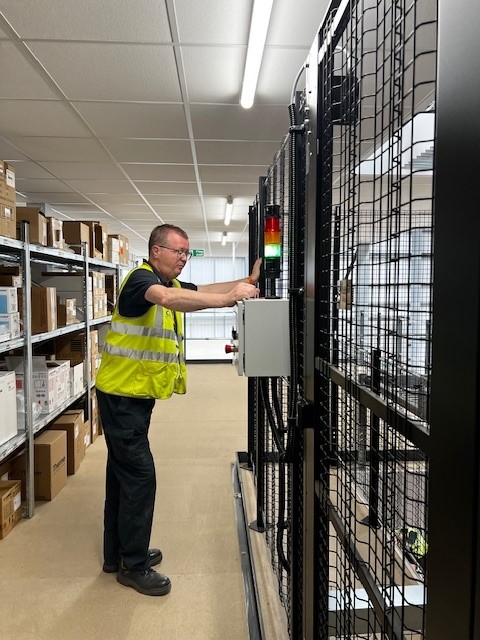How to Prevent Conveyor Malfunctions
5th August 2024

The rise of ecommerce has changed the retail landscape irrevocably over the last couple of decades – and its growth shows no signs of slowing. The industry is expected to show an annual growth rate of 4.43% over the next few years, resulting in a projected market volume of £113.40bn by 2028.1 It’s an exciting time for the warehousing industry, which is churning out parcels for home delivery at an unprecedented rate.
But whether the business is ecommerce-based or something else, to keep up with customer expectations many warehouses now rely on automated conveyor systems to transport orders rapidly through packaging and labelling processes and on for delivery. The technology has ramped up productivity massively by greatly reducing processing times. But for as much profit all of these parcels are making, there is as much to lose should anything go awry with the conveyor technology.
The cost of conveyor malfunctions
It’s estimated that in a typical warehouse facility, an automated conveyor system can process up to 7,000 parcels per hour. This number reduces to 1-2,000 by hand if the system stops. Time is money in this industry, so unexpected breakdowns delay order fulfilment and lead to dissatisfied customers. And the negative consequences of reputational damage can be much longer lasting than the downtime itself. Much like the family car, conveyor systems rely on regular maintenance and servicing to keep them running at optimal performance.
There are numerous things that can go wrong with an automated conveyor system. Parts such as conveyor drive bands, belts, bearings, motors and lineshafts etc may wear out over time. A lot of warehouses and factories can be dusty environments, dust accumulation can hinder the smooth operation of conveyor belts and other moving parts, leading to increased energy consumption and reduced efficiency as well as a risk of fire.
As the dust accumulates within the system, it can also act as an abrasive, accelerating the wear and tear of moving parts and eventually clogging up the machinery until things grind to a halt. Regular maintenance and lubrication are essential, to keep conveyor systems running smoothly and reduce the likelihood of costly repairs and disruptive downtime.
Preventative maintenance
As well as the ongoing smooth functioning of the system, preventative maintenance also provides the best value return on investment by prolonging the lifespan of the equipment. Indeed, technology installed by leading ecommerce specialist CSL over 25 years ago is still in regular use thanks to consistent maintenance.
Aside from financial considerations, maintenance of conveyor systems is also a safety issue. If not adequately maintained, loose components or failed safety features can result in accidents. Routine maintenance and safety checks help to avoid such incidents and ensure that the system remains compliant with current health and safety regulations. Automated conveyor technology can also be linked to a warehouse’s fire alarm system, meaning that the system will immediately halt should the fire alarm be set off, potentially reducing the risk of harm.
Planning for a contingency
As with the family car example, ongoing maintenance of conveyor technology is something that needs to be budgeted for from the outset. When things unexpectedly go wrong, the cost of spare parts and repairs can be an unwelcome cost. However depending on individual needs, a good technology provider will offer a range of maintenance packages to suit you.
Ed Wainman, After Sales Manager at CSL explained: “Every company we deal with has different needs, so we offer a range of maintenance options. Some use our spare parts packages, where they have parts readily available for inhouse repair. Others go for our full spec packages with remote software support and on-call engineers. But whatever the case, in my experience a system is much less likely to break down if it’s regularly serviced and maintained.”
Ultimately warehousing bosses must weigh up the ongoing cost of maintenance packages against the possible short and long-term costs of sudden breakdowns and repairs. With many companies offering service contracts ranging from one to five years with added advantages such as discounts on parts and access to round the clock support, there’s plenty of room for flexibility.
Minimising the cost of downtime
The rapid turnaround and delivery of products has become embedded in the consumer landscape of our society. Even with the best technology in place, there will be times when the unexpected happens and repairs or adjustments need to be made. Prolonged periods of downtime can be catastrophic to businesses that are dependent on conveyor technology, so keeping it running at peak performance needs to be a priority. The quickest and least disruptive way to prevent and respond to malfunctions is to have a maintenance agreement in place. There are many options out there to suit different sized companies and needs, but a good technology provider will also be willing to offer bespoke solutions to suit individual requirements.
Similar news

